Second-year head coaches generally fly under the radar entering the season. They're not rookies anymore, they're not dealing with a new job and they're nowhere near hot seat chatter yet. That is especially the case this offseason.
First-year head coaches are in a difficult position entering the college basketball season, as there is a good chance they didn't get to meet their players in person until the summer and might not have seen their players with a basketball until four or five months after they got the job.
That is not the case for second-year coaches. They have a year in the program under their belts and a full recruiting class with which to work. But we can already begin to gauge the progress of some Year 2 head coaches entering the season -- and the potential problems each one might face.
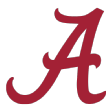
Nate Oats, Alabama Crimson Tide
Things are looking up in Tuscaloosa entering Year 2. The Crimson Tide struggled down the stretch last season and would have been on the outside looking in for an NCAA tournament appearance, but they bring in a talented recruiting class featuring potential first-round pick Josh Primo, and they have transfers Jahvon Quinerly and Jordan Bruner eligible. Kira Lewis, who left early for the NBA, developed into a lottery pick last season for Alabama under Oats.
And we're not done yet. Alabama already landed five-star guard J.D. Davison and highly touted junior college transfer Langston Wilson as part of a three-man 2021 class. An NCAA tournament bid should be the expectation this year.
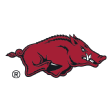
Eric Musselman, Arkansas Razorbacks
It didn't take long for Musselman to introduce his style and system to Fayetteville. While the Hogs were unlikely to land an NCAA tournament bid last season and lost Mason Jones and Isaiah Joe early to the NBA draft, there is optimism entering the season. This roster looks a lot like Musselman's Nevada rosters -- but with four ESPN 100 prospects balancing out the scholarship chart. Only two players who saw minutes on last season's team return, with three sit-out transfers and three graduate transfers joining the fold along with the freshmen. It might take some time to get everyone on the same page, but Musselman constantly reloaded his rosters at Nevada -- and wins followed every season.
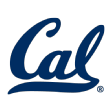
Mark Fox, California Golden Bears
It was always going to take some time for Fox to turn around the Golden Bears. This was a program that went 5-31 in the Pac-12 in the two seasons prior to his taking over. But Cal showed signs of improvement a year ago. It went 14-18 overall and 7-11 in the Pac-12, and actually ended the season with a win over Stanford in the Pac-12 tournament before everything shut down.
The Golden Bears enter the season expected to finish in the bottom third of the Pac-12 again, but they landed graduate transfers Ryan Betley and Makale Foreman and bring back leading scorer Matt Bradley. They won't be a pushover in the league this season.

John Brannen, Cincinnati Bearcats
Entering last season, there was some thought that Brannen would have a difficult time transitioning the team from Mick Cronin's grind-it-out style -- but the Bearcats responded by winning a share of the American regular-season title in Year 1. They were right in the mix for an NCAA tournament bid down the stretch. The expectation is that they will take a step back this season, with Jarron Cumberland and Tre Scott both departing. But Brannen was active in the spring, landing transfers David DeJulius (Michigan) and Rapolas Ivanauskas (Colgate), to go with three returning starters. Cincinnati likely won't compete for a league title again, but Brannen is on his way to making this program his own.
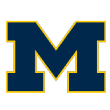
Juwan Howard, Michigan Wolverines
There might not be a hotter coach on the recruiting trail right now than Howard, who landed top-10 seniors Moussa Diabate and Caleb Houstan in the past two weeks and enters the early signing period with the No. 1 recruiting class in the country. That is on the heels of a 2020 class that included three ESPN 100 prospects and would have been even better if five-star forward Isaiah Todd didn't opt for the G League.
Michigan was the talk of college basketball for the first month of last season, rolling through the Battle 4 Atlantis. The Wolverines came back down to earth but were still a surefire NCAA tournament team and likely a top-six seed. Entering this season, they're a borderline top-25 team, and Howard's prowess on the recruiting trail ensures that the talent level in Ann Arbor will only go up.

Fred Hoiberg, Nebraska Cornhuskers
Everyone knew Hoiberg was going to try to replicate what he did at Iowa State when he took over in Lincoln. In other words, hit the transfer market in a major way, load up on talented pieces that needed a change of scenery and then strike on some under-the-radar prospects. In his first year at Iowa State, the Cyclones went 3-13 in the Big 12. In his second year, they finished 12-6 and went to the NCAA tournament. I'm not expecting that type of immediate turnaround after they went 2-18 in the Big Ten and 7-25 overall last season, but there is a good amount of talent on this team. Three transfers sat out last season, four transfers are eligible immediately and three players are back, so there's experience too. Nebraska won't be down for too long.
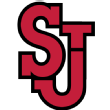
Mike Anderson, St. John's Red Storm
Anderson doesn't have losing seasons. It's just not what he does. And so even though St. John's faced a big rebuild last season, it managed to finish 17-15 -- and beat the likes of West Virginia, Arizona, Creighton and Marquette. And now Anderson is beginning to get more players that fit his "40 minutes of hell" run-and-press style. Coaches around the Big East have mentioned how the Johnnies were starting to get acclimated to Anderson's system by the end of the season, and another year in the program can only help. Four starters are back, there is athleticism coming off the bench and a talented recruiting class of freshmen and junior college transfers enters the fold. They are going to be a nuisance to play.
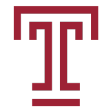
Aaron McKie, Temple Owls
McKie's first season in charge began reasonably well, as the Owls beat USC and Davidson en route to a 6-1 start. But the wheels really fell off in conference play. They opened with six losses in their first eight AAC games and ended with five straight defeats. To make matters worse, three starters are gone from that team. The strength is in the frontcourt, with former Indiana transfer Jake Forrester combining with seniors De'Vondre Perry and J.P. Moorman II.
Outside of that, there are a lot of question marks. The Owls are being picked to finish in the bottom three of the league, and that seems fair for a team this young. But if the newcomers can show signs of promise, things could get better in 2021-22.
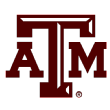
Buzz Williams, Texas A&M Aggies
Bet you didn't know the Aggies finished 10-8 in the SEC last season, tied for sixth in the league. That was ahead of theoretical bubble teams Arkansas, Alabama and Tennessee, and the Aggies beat all three of those teams during a strong finish to the season. Three starters are back, and Williams is already making inroads on the recruiting trail. Quinnipiac transfer Kevin Marfo was the nation's leading rebounder, and top-100 recruits Hassan Diarra and Jaxson Robinson will be expected to make an impact.
Looking forward, the Aggies also already have a commitment from top-50 2021 prospect Manny Obaseki. A&M once again doesn't have huge expectations entering the season, but they could be a sneaky middle-of-the-pack group.
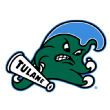
Ron Hunter, Tulane Green Wave
Hunter took over a dreadful situation two springs ago. Mike Dunleavy's final season with the Green Wave ended in a winless conference campaign and a 4-27 overall record, so Hunter had work to do. There were some positive moments last year: a nonconference win over Utah, league victories over Cincinnati and SMU. Hunter won at least 20 games in five of his final six seasons at Georgia State, so he'll be expecting forward strides this season -- and he's going to be counting on a lot of newcomers. They bring in plenty of reinforcements, with four transfers entering the program with high-major experience and Gabe Watson (Southern Miss) the best of the bunch. It's going to be a slow rebuild, but Hunter has had success going the transfer route before.
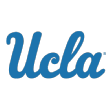
Mick Cronin, UCLA Bruins
When UCLA hired Cronin, there were some questions. Could he play his grind-it-out style in Westwood? And could he recruit to the fan base's expectations? He is answering both quickly. There were growing pains last season, including a home loss to Cal State Fullerton, but UCLA won 11 of its final 14 games to finish just one game shy of a Pac-12 regular-season title. Cronin landed five-star guard Daishen Nix in the 2020 class, but he opted for the G League. So the coach followed that up by landing Kentucky transfer Johnny Juzang and ESPN 100 prospects Peyton Watson and Will McClendon in 2021. And the Bruins should have a top-25 team this season. Cronin is doing a terrific job.

Jerry Stackhouse, Vanderbilt Commodores
It has been a tumultuous couple of seasons at Vanderbilt, with Bryce Drew getting fired after just three seasons following an 0-18 SEC campaign in 2018-19. Stackhouse, especially as someone without college coaching experience, was facing a difficult rebuild. And last season reflected that. The Commodores won just one game from Jan. 4 to March 3, although the one win snapped a 26-game SEC losing streak. So that's a plus. Things should be better in Year 2. Four starters are back, and transfers D.J. Harvey (Notre Dame) and Issac McBride (Kansas) are eligible. Stackhouse hasn't been able to make a splash on the recruiting trail just yet, but improvements should be coming on and off the court.
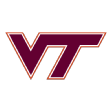
Mike Young, Virginia Tech Hokies
Given the reputation Young has within the coaching industry as a tactician, it shouldn't have been a surprise that the Hokies surprised in Year 1. They beat Michigan State in Maui in the first month of the season and started 5-3 in the ACC before fading dramatically over the final six weeks of the campaign.
I think the Hokies are actually a sneaky team to watch in the ACC this season. A number of key players from last season are back, led by Tyrece Radford and Jalen Cone, while graduate transfers Cartier Diarra and Justyn Mutts will make an impact. Top-100 freshmen Joe Bamisile and Darius Maddox are entering the fold, as is former Wofford transfer Keve Aluma. Given Young's sideline ability and the fact that he is recruiting better than expected, this hire has been a win for Tech so far.

Kyle Smith, Washington State Cougars
For a coach whose team finished next to last in the league last season, Smith made an impression on Pac-12 coaches. Opposing coaches spoke highly of him during the offseason, discussing how difficult it is to prepare to face his team. Context is necessary too. On paper, 6-12 in the Pac-12 and 16-16 overall isn't overwhelming. But the last time Washington State finished .500 or better overall was in 2012. The Cougars have won more than six Pac-12 games once since 2012. So it's fair to say Smith exceeded expectations in his first year.
Losing CJ Elleby is going to be difficult to overcome, but Isaac Bonton is back and there are a couple of intriguing newcomers in Efe Obogidi and Jefferson Koulibaly. An NCAA tournament bid isn't the expectation in Pullman, but keep an eye on Smith.
